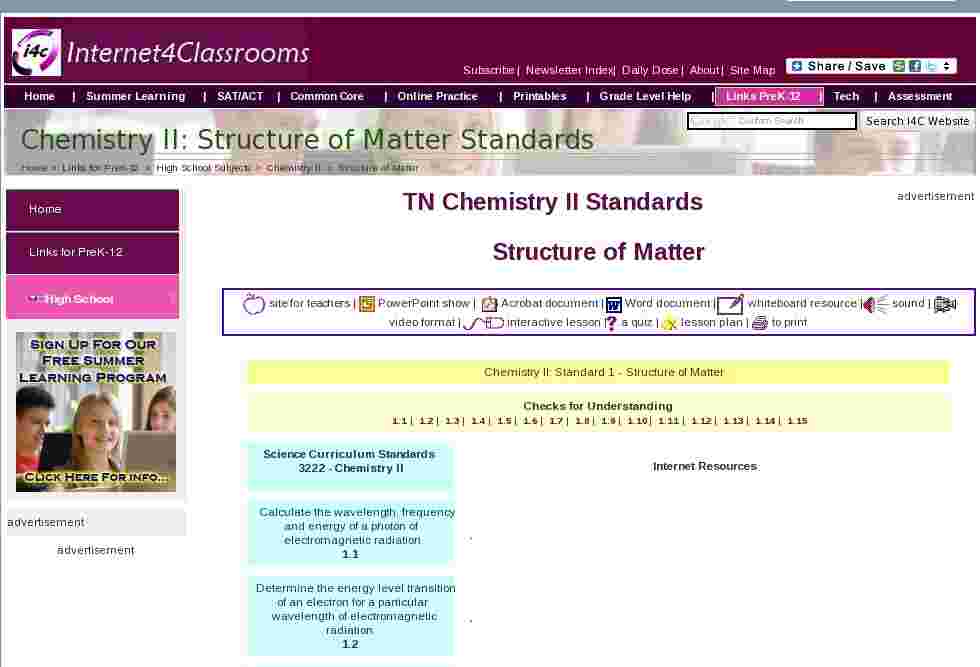Chemistry II: Standard 1 - Structure of Matter |
|
Science Curriculum Standards
3222 - Chemistry II
|
Internet Resources |
Calculate the wavelength, frequency and energy of a photon of electromagnetic radiation.
1.1 |
|
Determine the energy level transition of an electron for a particular wavelength of electromagnetic radiation.
1.2 |
|
Correlate emission spectra lines of the hydrogen atom to their respective energy-level transitions.
1.3 |
|
Describe the arrangement of electrons in an atom using orbital diagrams, electron configuration notation, and Lewis structures.
1.4 |
|
Explain the periodic trends of the main group elements including atomic and ionic radii, ionization energies, and electron affinities.
1.5 |
|
Explain the role of electron shielding and effective nuclear charge in determining the atomic and ionic radii, ionization energy, and electron affinities of an atom or ion.
1.6 |
|
Describe to correlation between the principle quantum number of the valence electrons and the atomic and ionic radii, ionization energy, and electron affinities of an atom or ion.
1.7 |
|
Use Lewis structures to illustrate the structure, shape, and characteristics of polyatomic ions, ionic and molecular compounds.
1.8 |
- Molecular Structure - Canvas Mol will draw molecular structure of several elements or compounds

|
Illustrate the shape of molecular compounds using VSEPR theory.
1.9 |
|
Determine the polarity of a molecular compound by examining its bond dipoles and shape.
1.10 |
|
Apply Lewis structures and formal charge analysis to determine if a compound or polyatomic ion forms resonance structures.
1.11 |
|
Explain the formation of hybridized bond orbitals in molecular compounds using VSEPR and valence bond theory.
1.12 |
|
Illustrate how sigma and pi bonds form between atoms in a molecular compound.
1.13 |
|
Draw the basic functional groups found in organic molecules.
1.14 |
|
Draw the structural formulas of simple organic molecules.
1.15 |
|
site for teachers |
PowerPoint show |
Acrobat document |
Word document |
whiteboard resource |
sound |
video format |
interactive lesson |
a quiz |
lesson plan |
to print

 Custom Search
Custom Search